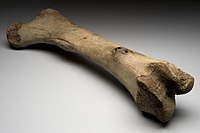
α2A- and α2C-adrenoceptor expression and functionality in postmortem prefrontal cortex of schizophrenia subjects
Sign Up to like & getrecommendations! Published in 2021 at "European Neuropsychopharmacology"
DOI: 10.1016/j.euroneuro.2021.05.012
Abstract: Previous evidence suggests that α2-adrenoceptors (α2-AR) may be involved in the pathophysiology of schizophrenia. However, postmortem brain studies on α2-AR expression and functionality in schizophrenia are scarce. The aim of our work was to evaluate… read more here.
Keywords: schizophrenia; expression functionality; antipsychotic free; schizophrenia subjects ... See more keywords

S165. GLUTAMATERGIC ABNORMALITIES IN EARLY SCHIZOPHRENIA AND BIPOLAR DISORDER MEASURED USING WHOLE-BRAIN SPECTROSCOPY
Sign Up to like & getrecommendations! Published in 2020 at "Schizophrenia Bulletin"
DOI: 10.1093/schbul/sbaa031.231
Abstract: Abstract Background Glutamatergic abnormalities in schizophrenia and bipolar disorder gave been identified using proton magnetic resonance spectroscopy (1H-MRS). Although schizophrenia and bipolar disorder are both known to involve extensive brain networks, most MRS studies have… read more here.
Keywords: schizophrenia bipolar; bipolar disorder; spectroscopy; brain ... See more keywords

Bone Status in Obese, Non-diabetic, Antipsychotic-Treated Patients, and Effects of the Glucagon-Like Peptide-1 Receptor Agonist Exenatide on Bone Turnover Markers and Bone Mineral Density
Sign Up to like & getrecommendations! Published in 2019 at "Frontiers in Psychiatry"
DOI: 10.3389/fpsyt.2018.00781
Abstract: Background: Low bone mineral density (BMD) may constitute an underestimated comorbidity in schizophrenia patients undergoing long-term antipsychotic treatment. Glucagon-like peptide 1 (GLP-1) receptor agonists are antidiabetic drugs, which may also affect bone turnover. Methods: In… read more here.
Keywords: bone status; bone; receptor; treated patients ... See more keywords